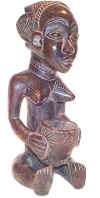 |
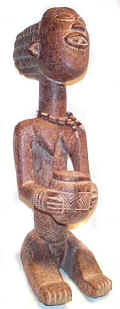 |
|||
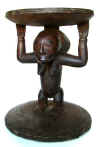 |
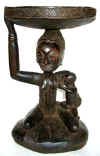 |
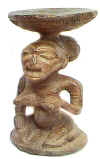 |
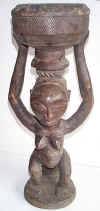 |
|
 |
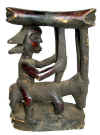 |
 |
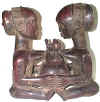 |
|
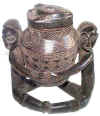 |
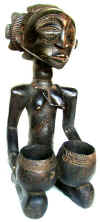 |
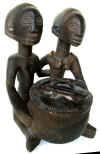 |
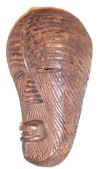 |
|
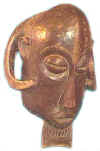 |
||||
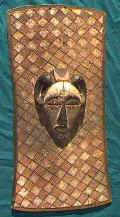 |
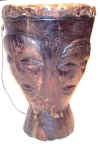 |
 |
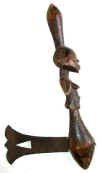 |
|
 |
 |
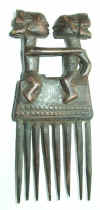 |
 |
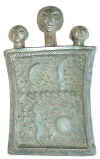 |
TRIBAL AFRICAN ART
LUBA (BALUBA, KALUBA, LOUBA, URUWA, WALUBA, WARUA)
Democratic Republic of the Congo
The Luba number 1 million.
The vast Luba territory, comprising the entire southeastern part of the DRC, as far as Tanganyika and Lake Mweru, is uniform as regards language and culture, but racially mixed. Although the history of the Luba people is one of violence and warfare, their artistic style is characterized by harmonious integration of organically related forms. The splendid artistic achievements of the Luba are due to a felicitous intermingling of different racial and cultural elements, and to the high standards prevailing at the court. Luba arts counts amongst the finest that Africa has to offer. Artists occupied a privileged place in the hierarchy. The Luba artist carried a ceremonial ax on his shoulder, an emblem of prestige and of dignity of his position. Some apprentices would be recruited from among the deformed, who could neither hunt nor be warriors and who were believed to have a close connection with magic.Among the characteristics of Luba
sculpture are: intricate hair-dress, often in the form of a cross, or falling down like a
cascade; a grooved diagonal band separating the hair-line from the forehead; eyes shaped
like coffee-beans; small simplified ‘cat’s ears’; ornamental cicatrices in
relief on the body; the surface elaborately worked and polished. The traditional carvings
are for ancestor and spirit cults, for initiation, medical and divination purposes. The
favorite theme in sculpture was woman since, according to the Luba myth, vilie
was the first woman spirit, founder of the clan and guarantor of fertility and the
lineage. Women were cult guardians, and the royal wives played an important role: sent as
emissaries to the chiefs of neighboring ethnicities, they would contract profitable
political alliances based on marriage. Some figures are freestanding, almost always
in a frontal position, often with their hands on their breasts; others are kneeling,
sitting, or standing figures whose upraised hands serve as supports for bowls, seats, and
neck rests. The figures are often characterized by elaborate scarification patterns on the
body. The diviner, painted white, used the mboko, a seated or crouched female
figure holding a bowl robbed with kaolin. He would shake her and analyze the position of
the different objects the bowl contained. In the healing ritual, the sorcerer would use
the kabila, or daughter of the spirit, which consisted of a figure and receptacle,
which were also placed at the entry to the house during the childbirth. The female figures
are modeled in rounded forms and have what is called dodu; that is, a stylistic
tendency toward plumpness. One well-known Luba sub-style has been called the
"long-face style" of Buli. It contrasts strongly with the roundness of other
Luba figures. The faces are elongated, with angular, elegant features.
Of the several mask types used by the Luba, one of the better known is kifwebe, a mask elaborated with whitened parallel grooves on a dark ground. The kifwebe masks, used by the secret society of the same name, originated in this territory. The Luba attribute its origins to three spirits, which emerged from a ditch near a lake. The female spirit was attracted by humans and went to live among them. The two male spirits stayed in the bush, but visited the village where they dazzled the inhabitants with their dancing to the point where the men begged to be initiated. These distinctive masks vary a great deal but in general are characterized by lineal patterns all over the face.
They were worn with a raffia costume. Danced in male/female couples and representing spirits, kifwebe connect this world and the spirit world. They are used to mark important periods of social transition and transformation, appearing at the death of a chief or any other eminent person, or when a person assumes an important political title. Worn on the night of the new moon, they are also performed in honor of ancestors. They also are perceived as having healing abilities. Examples of large round kifwebe masks with broad noses, rectangular mouths, and flattened crests, entered European collections by the second half of the nineteenth century. During the first two decades of the twentieth century, the kifwebe masking tradition spread throughout the Luba and Songye regions of southwest DRC. Female masks are distinguished from male masks by geometric patterns that represent beauty, including dots, crosses, chevrons, and triangles. Entirely different are Luba masks with curved ram’s horns.